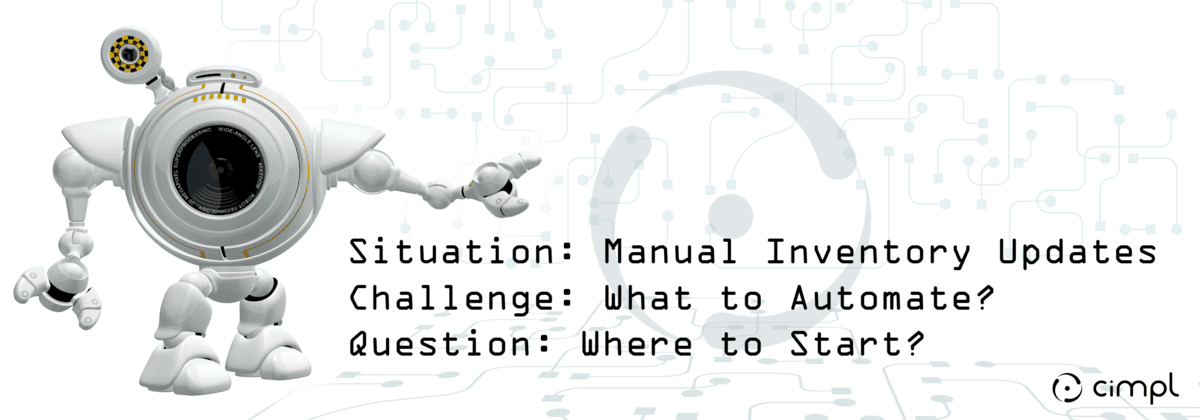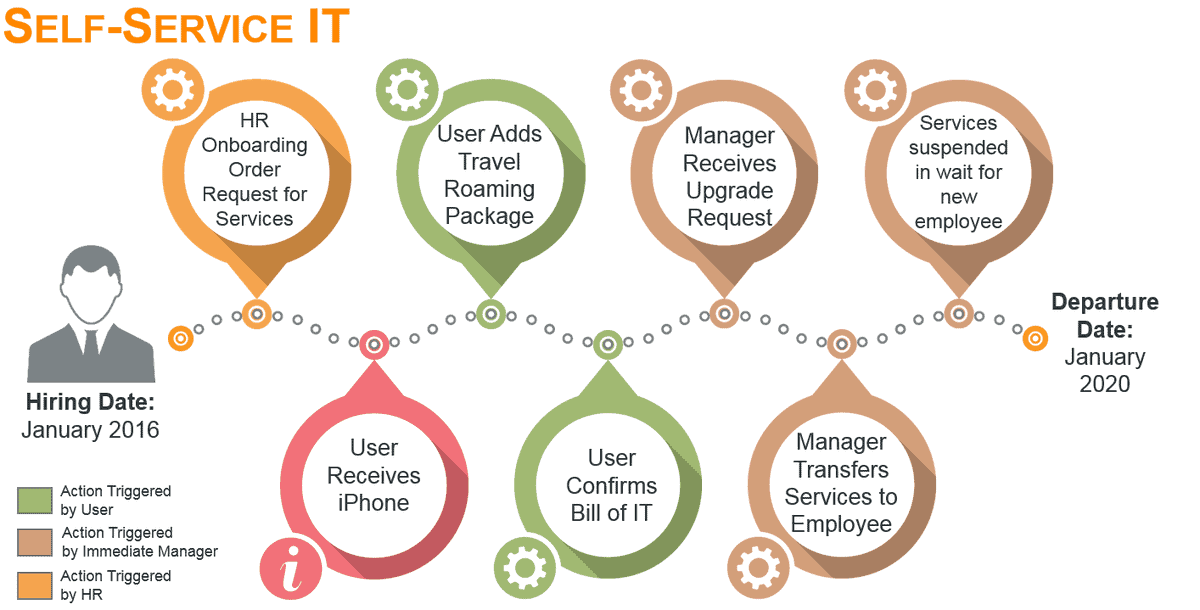
IT Cost & Asset Automation
Business analytics is the fastest growing category of global IT investment according to Forrester Research. This blog was originally written in 2012, at the time; a study done by Nucleus Research from 2012 found that for every dollar a company invested in business analytics it earned $10.66, that’s a 1066% ROI. In 2014, they found that the ratio increased from $10.66 to $13.01. That is 122% more return in 2 years. This indicates that there is an increasing trend for Business Analytics. Not too shabby.
A Telecommunications and IT Management system can provide advanced analytics along with a powerful engine to automate tasks.
As companies turn to data and analytics they gain significant visibility into the overall performance of the business. The manual process of turning these insights into action can be an arduous management task on its own.
Automation connects data, insights, and action seamlessly – blowing productivity through the roof. In our experience, we have been able to identify 5 main areas to manage – mobile, wireline, M2M, UC, cloud subscriptions and IT – assets that we have been able to automate; providing our clients with a recurring stream of value.
These 5 areas are:
- Administration
- Reporting
- Policy Enforcement
- Inventory Management
- Auditing
1. Administration:
Administering large volumes of transactions can be executed, without draining significant amount of resources from the company with MACD automation.
MACD – Moves, Adds, Changes, and Disconnects.
With MACDs the system is able to identify when an employee, service, and/or device has moved within the organization. This feature is of the most powerful feature of a telecom and IT management system.

The system can record a MACD when an employee joins a company, get relocated, promoted / demoted, fired and/or retired. It can also detect when a device is ordered, replaced, or switches hands. When services are turned on or disconnected, it knows that too. As a MACD action occurs it is executed based on a set of business rules.
For example: An employee gets hired and as they enter the HR system, a work order for an iPhone is automatically generated and sent to the carrier. Based on the typical data and voice requirements of an employee in that role, the plan and phone type is selected. The carrier then fills the order and sends an invoice. The expense is recorded and the inventory is updated.
Now the system is tracking the new device, service, and employee, within the organization. Pretty neat huh?
2. Reporting
IT cost transparency can drive significant cost reductions within an organization. When you show employees what they spend on a monthly basis, a surprising thing happens… costs drop!
Automating validation of costs can shift the way your employee’s think about expenses and usage.
The ability to monitor commercial consumption through the lens of graphs gives decision makers the ability to perceive trends and outliers within their businesses. This will point the decision makers to ask better questions about their processes and tackle pressing issues more efficiently as they will be able to specifically investigate the reasons as to why specimens may be below or above the average curve. (For more information about the various types of reporting that Cimpl provides please follow this link.)
3. Policy Enforcement
The next step to automating routine costs validation is IT policy enforcement, it can also be called governance. When business rules are embedded in the system, notifications are automatically generated. It helps you keep an eye on your top 10 “big spenders” to really determine if they are using their services to drive value or for personal consumption. Policy enforcement allows you to track employee usage and easily manage the employee digital trail.
4. Inventory Management
Maintaining an accurate inventory of your IT and telecom assets is essential to maximizing cost savings. Inventory inaccuracy can lead to spending money on devices or services that may not be in use. Tracking wireline devices and services which follow an employee throughout the employee lifecycle (hiring/ firing, department transfers and etc.) leaves room for inaccuracy. In such cases there runs the risk of paying for services or devices that are not assigned to an employee which leads to wasteful spending. This inaccuracy can become quite expensive in the case where it occurs to multiple employees over a number of years. One solution to this issue is to automate inventory management.
Moreover, having a detailed breakdown of the inventory allows businesses to have easy accessible documentation of the depreciation of their assets. This enables businesses to use that documentation for tax purposes, ultimately, aligning with efficiency and cost savings. (Follow this link for more information on inventory management.)
5. Auditing
Auditing telecom and IT inventory can be a frustrating and extensive task if done manually. Traditionally, telecom audits could only be done sporadically.
With the right software, you can conduct telecom and IT audits automatically on a periodic basis to ensure that you have an accurate account of services and devices, and also that you’re not paying for any unused services. Electronic audits will surface all discrepancies and allow you to track disputes until resolution – with cash in hand.
A bill of IT can also help with making your accounts accurate. The bill of IT is a bill that specifies the association between an IT asset (or service) with any or all of the following: cost, price, budget for its use, quality and benchmarking. A bill of IT’s purpose is to justify an IT bill to people who would otherwise not http://page.cimpl.com/what-is-it-expense-management-en
Download our case studies and learn how a large international bank was able to automate more than 50% of their MACDs.
